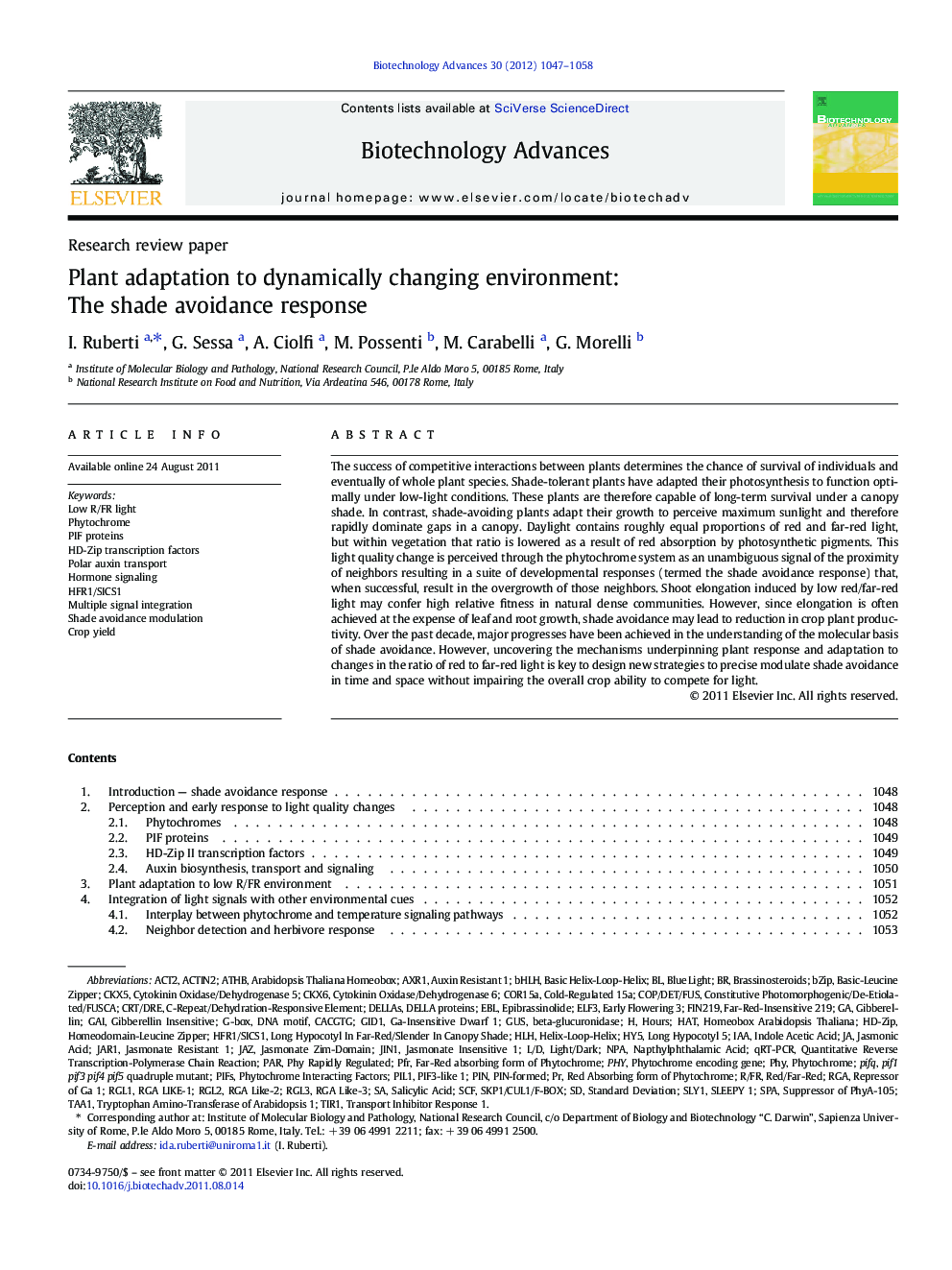| کد مقاله | کد نشریه | سال انتشار | مقاله انگلیسی | نسخه تمام متن |
|---|---|---|---|---|
| 14472 | 1223 | 2012 | 12 صفحه PDF | دانلود رایگان |

The success of competitive interactions between plants determines the chance of survival of individuals and eventually of whole plant species. Shade-tolerant plants have adapted their photosynthesis to function optimally under low-light conditions. These plants are therefore capable of long-term survival under a canopy shade. In contrast, shade-avoiding plants adapt their growth to perceive maximum sunlight and therefore rapidly dominate gaps in a canopy. Daylight contains roughly equal proportions of red and far-red light, but within vegetation that ratio is lowered as a result of red absorption by photosynthetic pigments. This light quality change is perceived through the phytochrome system as an unambiguous signal of the proximity of neighbors resulting in a suite of developmental responses (termed the shade avoidance response) that, when successful, result in the overgrowth of those neighbors. Shoot elongation induced by low red/far-red light may confer high relative fitness in natural dense communities. However, since elongation is often achieved at the expense of leaf and root growth, shade avoidance may lead to reduction in crop plant productivity. Over the past decade, major progresses have been achieved in the understanding of the molecular basis of shade avoidance. However, uncovering the mechanisms underpinning plant response and adaptation to changes in the ratio of red to far-red light is key to design new strategies to precise modulate shade avoidance in time and space without impairing the overall crop ability to compete for light.
Journal: Biotechnology Advances - Volume 30, Issue 5, September–October 2012, Pages 1047–1058